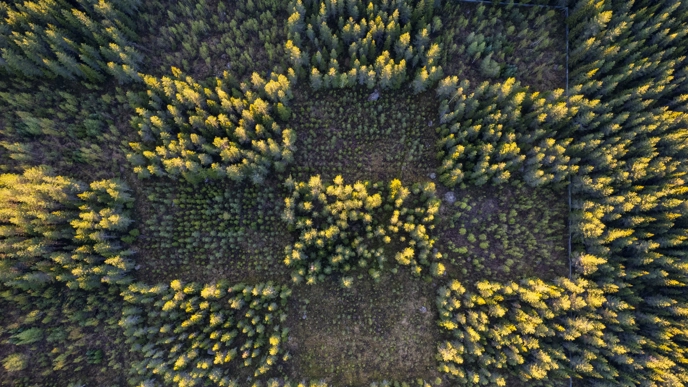
Continuous cover forestry in boreal forests: Consequences for timber production, carbon sequestration and biodiversity
KEY POINTS- Timber production
- Carbon balance
- Biodiversity
Project overview
Participants
More related research
Short summary
This project evaluates how the key ecosystem services of timber production, climate benefit and biodiversity vary among alternative forest management methods. The knowledge gained from this project will guide the development of sustainable future silviculture strategies for boreal forests.
Boreal forests are a key resource for Sweden’s bio-based economy while also providing other important ecosystem services related to climate change mitigation and biodiversity. Sustaining these various goals whilst future climatic changes are projected to progress most rapidly in the boreal region, will require adaptive management strategies. For this purpose, a transformation from traditional Rotation Forestry (RF), i.e. even-aged stands based on forest clear-cutting, towards Continuous Cover Forestry (CCF) methods is currently debated in Scandinavia as a way forward to increase environmental benefits and climate resilience. Common CCF methods for boreal forests include various approaches, for example, i) ’selective harvesting/thinning’, ii) ’checkerboard regeneration systems’ and iii) partial cuttings such as ’gap or strip systems’. Since these methods differ in spatial stand structure and vegetation composition, their effects on tree growth, soil biogeochemistry and biodiversity likely differ. At present, however, comprehensive empirical data to evaluate these associated consequences for ecosystem services is lacking, particularly for carbon sequestration and biodiversity. Thus, filling this knowledge gap is a critical prerequisite for developing CCF methods that can form a part of a sustainable future silviculture strategy for boreal forests.
The aim of this project is to evaluate the consequences of alternative CCF methods for key forest ecosystem services including timber production, carbon sequestration, and biodiversity.
Utilizing established series of alternative CCF trials within the SLU Experimental Forests across boreal Sweden, the main objectives are to:
1) Assess differences in forest biomass and timber production for various CCF methods,
2) Determine the C sequestration and its resilience to weather extremes for a range of CCF methods,
3) Evaluate ecological functions provided by various CCF methods,
4) Compare trade-offs among these key ecosystem services (timber production, C sequestration, and biodiversity) among CCF methods and RF.
These objectives will be addressed within four integrated work packages (WPs) which evaluate these key ecosystem services for diverse CCF methods including selective thinnings (WP1), checkerboard systems (WP2) and gap-felling (WP3), including a synthesis and comparison with RF (WP4).
This project will deliver an evidence-based knowledge framework for developing a well-constrained decision-making matrix for multiple benefits of alternative forest management strategies, which will provide valuable decision support to forest stakeholders and policy makers.